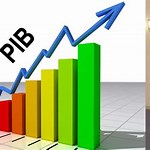Indicator was up 0.3% in comparison to March and 1.8%
06/21/2022

The Brazilian economy grew 0.3% in April compared to March, with increases of 1.8% in the quarter ending in April compared to the previous quarter, and of 2.8% compared to the same period in 2021, according to the GDP Monitor reading, announced on Monday by Fundação Getulio Vargas (FGV).
According to FGV economist Claudio Considera, in charge of the indicator, the good results were driven by strong increases in household consumption and demand for services. But, for him, the intense increases in these sectors are not very sustainable because they are influenced by effects that will not last over the long term, such as repressed demand for services, which was low during the two years of the pandemic; and by additional income, which is concentrated in the second quarter. So, for the specialist, the GDP growth in 2022 is heading for a rate of up to 2% in comparison to 2021. Last year, GDP was up 4.6% in relation to 2020.
When detailing the behavior of the economy outlined by the April GDP Monitor, Mr. Considera pondered that the numbers show a clear reaction, both in household consumption and in services, compared to the same month in 2021. In April this year, household consumption grew 7.6% compared to March, the best result since May 2021 (12%). In the same period, service activities advanced 4.1%. In the quarter ending in April, compared to the same period in 2021, the advances in these two topics in the indicator were 4.8% and 4.1%, respectively.
He recalled that in April people were more inclined to face-to-face activities as well as social circulation when compared to the same period last year. The progress of vaccination against Covid-19 since then has allowed the rate of deaths from the disease to decrease and, with it, people’s fear of going back to the streets. This favors an increase in the consumption of services, such as bars and restaurants, which could not be accessed at a high rate last year, due to a worse scenario in the pandemic compared to the one observed today.
At the same time, April saw the beginning of the payment of the R$1,000 withdrawal from the Workers’ Severance Fund (FGTS) accounts, as well as the early payment of the 13th salary, a year-end bonus, for retired workers and pensioners, actions adopted by the government to boost the economy. This generated greater family consumption in the month, he noted.
However, when asked about the sustainability of the economy’s high pace, Mr. Considera was cautious. He commented that both FGTS withdrawals and 13th salary early payments will not continue to happen throughout the year. At the same time, he does not see a continuation, in the same magnitude, of the demand for services until the end of 2022. There are limits to the impact of repressed demand for services, in consumer access to this activity, he noted.
“Those things run out, those extra sales. And we also have a reduction in the purchasing power of families with the rise of inflation,” he recalled.
Another important aspect in the activity mentioned by him is the behavior of investments in the economy, still on a weak trajectory. Investments are a great inducer of jobs, as well as a sustainable pace in the GDP growth rhythm, he recalled. The indicator announced on Monday shows that the Gross Fixed Capital Formation (GFCF), which represents investments in the economy, fell 4.6% in April year-on-year, the fifth consecutive drop in that comparison. “The machinery and equipment industry is very bad,” he said. In the FGV’s GDP Monitor, the volume of machinery and equipment fell 10.7% in the quarter ending in April, compared to the same period in 2021.
Mr. Considera said that, in his analysis and with the information so far, the projections for GDP growth for 2022 would be more between 0.9%, 1%, possibly reaching 2% — but not exceeding 2%. “It should not go beyond that,” he reiterated.
*By Alessandra Saraiva — Rio de Janeiro
Source: Valor International
